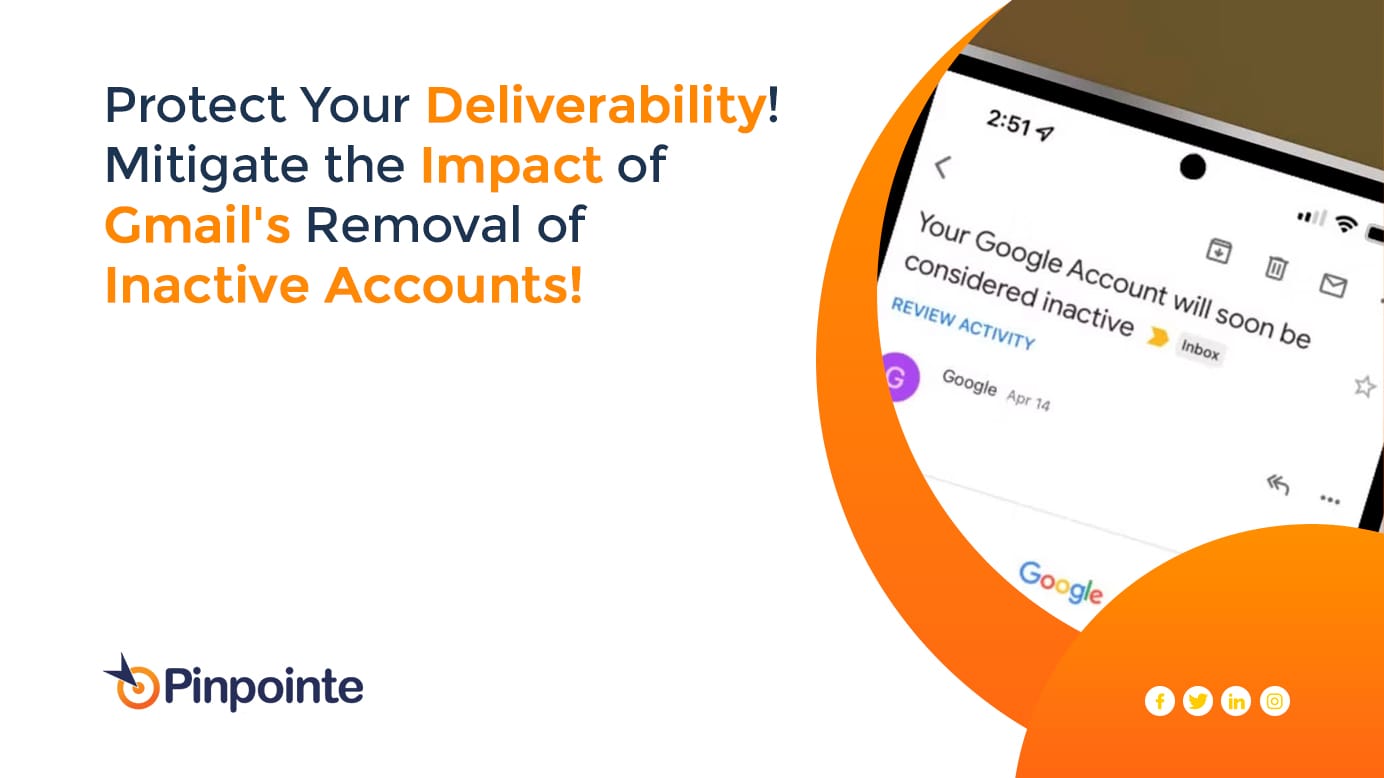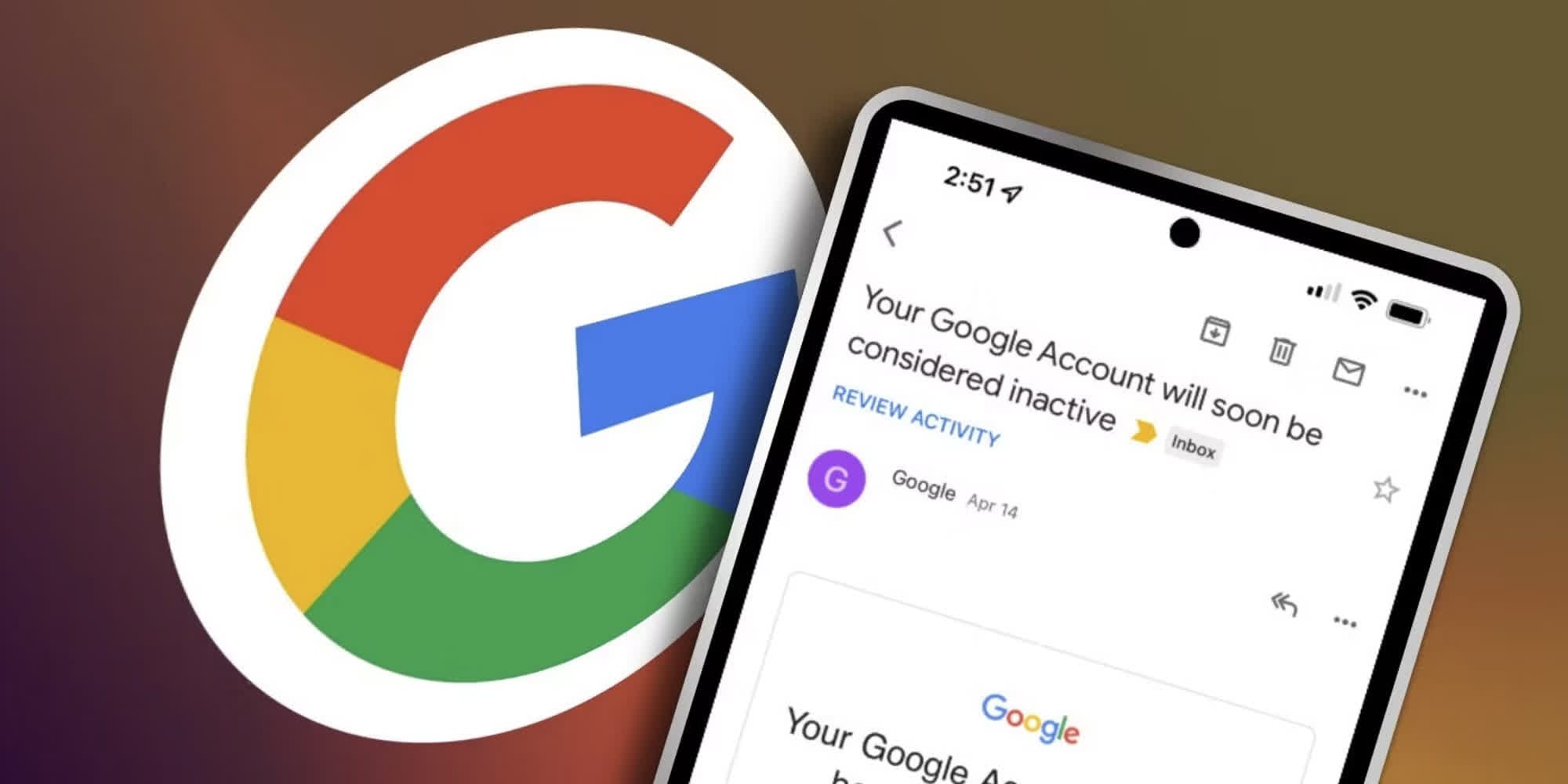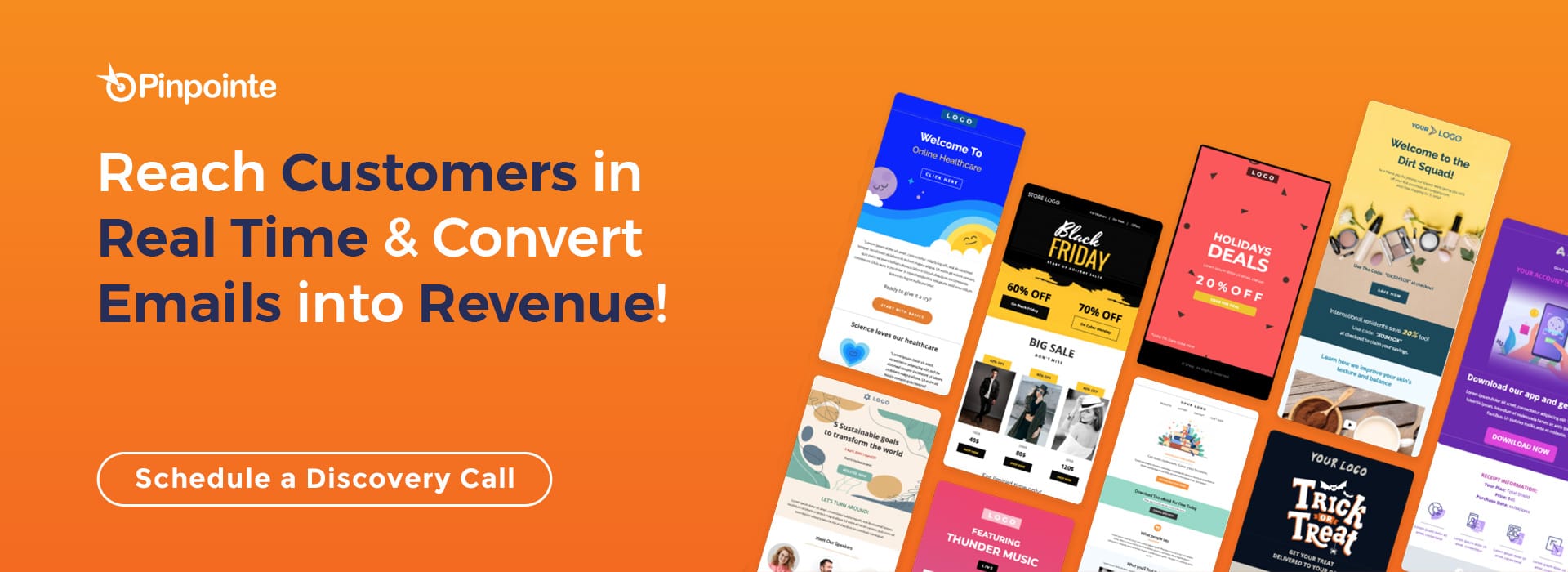
Protect Your Deliverability: Mitigate the Impact of Gmail's Removal of Inactive Accounts
Table of Contents
In a Google’s announcement on May 16, 2023, they introduced a significant initiative that might have a direct impact on your email deliverability. The plan involves the removal of all inactive Gmail accounts. This update, amidst other changes like BIMI certification and schema requirement tweaks, raises concerns for email senders regarding their sender reputation and overall metrics.
Understanding the Changes
Google's decision to remove inactive Gmail accounts is a part of their ongoing efforts to enhance the email ecosystem. While this move is aimed at improving user experience and reducing clutter, it poses potential challenges for email marketers. Inactive accounts being removed can directly affect your email list and subsequently impact your deliverability rates.
By doing so, Google aims to provide a more accurate representation of user engagement, ensuring that marketers can effectively target active users. The impact of this initiative depends on the extent to which your email list relies on Gmail addresses. To minimize any negative consequences on your sender reputation and metrics, it's crucial to take proactive steps. Consider segmenting your email list based on user activity, identify and re-engage with inactive subscribers, and stay updated on Google's timeline for the removal of these accounts.
We'll dive into more details, providing a timeline of the changes and offering actionable strategies to safeguard your sender reputation amidst these alterations.
Google's Cleanup Initiative for Inactive Accounts
Google is taking a proactive stance on account security and spam prevention, with a significant move to clean up inactive or unused Gmail accounts. This initiative aligns with the broader trend of prioritizing account security and data protection in the online landscape.
“People want the products and services they use online to be safe and secure...if an account hasn’t been used for an extended period of time, it is more likely to be compromised.”
Google
Why the Cleanup?
The primary goal behind Google's cleanup initiative is to enhance security measures and reduce the potential for spamming and hijacking attempts. Inactive or abandoned accounts are often vulnerable, lacking critical protections such as Two-Factor Authentication (2FA). By addressing these dormant accounts, Google aims to bolster overall account security across its platform.
Spam and abandoned accounts, being less likely to have implemented 2FA, pose a higher risk of compromised passwords and potential account takeovers for malicious purposes. At a time when data protection is gaining heightened importance, Google's cleanup initiative reflects a commitment to maintaining a secure online environment.
Read about the 6 Habits of Successful Email Marketers, and Time Spent on Each
Phased Deletion of Inactive Accounts: What You Need to Know
Google's initiative to remove inactive Gmail accounts involves a well-planned and phased approach to account deletion. This strategic process is designed to ensure fairness and transparency, giving users ample opportunity to retain their accounts. Here's a breakdown of the key details:
- Timeline for Deletion
The deletion policy targets accounts that have been inactive for a substantial period—specifically, two years or more. Google commenced the deletion process for the initial batch of accounts in December 2023, adhering to the timeline outlined in their announcement. This phased approach reflects Google's commitment to a gradual and considerate implementation of the cleanup initiative.
- Initial Batch Deletion
The first wave of deletions focused on accounts that were created but promptly abandoned, remaining inactive since their inception. This meticulous targeting ensures that accounts with immediate inactivity are addressed first, streamlining the cleanup process.
- Notification Campaigns
In subsequent phases, Google plans to target inactive accounts in batches. Users with inactive accounts will receive notification campaigns from Google, alerting them about the upcoming deletion. This proactive communication aims to provide users with a chance to reclaim their accounts before any deletions occur.
- Ongoing Deletion Policy
For accounts that do not respond to Google's notification campaigns, the deletion policy will be executed on an ongoing basis. This continuous approach ensures that the cleanup remains current and reflective of the evolving landscape of inactive accounts.
In the wake of these changes, Gmail users and email marketers alike are navigating a dynamic email environment. Stay informed and prepared for the evolving email marketing landscape by exploring our post on New 2024 Email Authentication Requirements for Yahoo and Gmail.

Navigating the Impact on Deliverability Amid Gmail's Update
The update in Gmail's account management may raise concerns about its impact on email deliverability. While there is a potential impact, adhering to email deliverability best practices provides a robust defense against negative repercussions.
· Risks of Inactive or Non-Existent Accounts
Sending emails to inactive or non-existent accounts poses a significant threat to your sender reputation and engagement metrics. These factors, in turn, can substantially diminish your deliverability. Email clients, including Gmail, consider factors such as engagement levels, blocks, and bounces when determining the placement of a sender's messages, potentially relegating them to the spam folder.
· A Reminder for Best Practices
For senders who diligently follow best practices, the prospect of Gmail deleting inactive accounts need not be a source of worry. However, it's essential to emphasize the importance of avoiding campaigns to inactive accounts, as this practice can adversely impact deliverability.
· Safeguarding Your Email List
If you plan to send to an older email list, proactive measures are crucial. Ensure that all email addresses are valid and reachable to prevent bounces. Leverage email verification tools, to validate and clean your list effectively.
· Time for Re-Engagement and Cleaning
With the timeline extending until December 2023, senders have the opportunity to implement re-engagement and list-cleaning tactics. This proactive approach serves as a defense, ensuring that your email practices align with the evolving standards and maintain optimal deliverability.

Protect Your Deliverability: Proactive Steps
· Targeted Re-Engagement Campaigns
In light of the impending Gmail update, safeguarding your deliverability involves proactive and targeted measures. Utilizing re-engagement campaigns tailored specifically for Gmail addresses is a strategic step to assess and revitalize your email list.
· Assessing List Responsiveness
Initiate a comprehensive evaluation of your email list's vitality. Address the critical question: Is your list alive and responsive? Re-engagement campaigns serve as a valuable tool to target segments of your list that have exhibited reduced engagement levels, particularly for Gmail addresses.
· Custom Campaigns for Gmail Recipients
Adapt your re-engagement campaigns to specifically target Gmail recipients. This customization ensures that your outreach aligns with the nuances of Gmail's user base, increasing the effectiveness of your re-engagement efforts.
· Identifying Signs of Inactivity
The primary objective of re-engagement campaigns is to identify signs of inactivity among Gmail addresses on your list. By sending targeted messages and monitoring responses, you can gauge the responsiveness of these recipients and take informed actions.
· Sunset Unresponsive Users
As part of your re-engagement strategy, consider sunsetting unresponsive users. This process involves systematically removing users who exhibit prolonged inactivity, streamlining your email list for optimal engagement and deliverability.
· Embracing Adaptive Best Practices
While these steps align with standard best practices, their adaptation to target Gmail addresses underscores a proactive approach to the impending changes. Embrace these adaptive strategies to fortify your deliverability and maintain a robust sender reputation.
· Guidance for Seamless Implementation
For seamless implementation of these strategies and further guidance on email list management, consult our comprehensive guide on proactive measures to protect your deliverability amid evolving industry standards.
List Cleanup for Enhanced Deliverability
When we talk of list cleanup, email list cleanup reigns at top, and it's a continual commitment rather than a one-time endeavor. Communicating with unresponsive users or invalid addresses can severely compromise your engagement metrics, directly impacting deliverability.
Regularly validating your email list is crucial, and the advent of changes, such as Google's update, presents an opportune moment to eliminate dead weight. Utilize bulk verifications to validate old lists, ensuring accuracy and relevance. While this can be executed before December 2023, ongoing list verification remains imperative to adapt to evolving user behaviors.
Implementing a sunset policy is a proactive strategy to automate email list cleaning. This policy systematically removes unresponsive or disengaged recipients, streamlining your list to actively target those genuinely interested in your communications. Embracing double opt-ins becomes crucial. This practice requires users to confirm their intent and subscription, adding an extra layer of validation.
Conclusion
The prospect of inactive account deletion may evoke concerns among email senders. If you find yourself feeling apprehensive, rest assured that managing your sender reputation can indeed be challenging. It's essential to recognize that Google's updates are not uncommon occurrences; they happen more frequently than one might realize. To keep a vigilant eye on your Gmail metrics and ensure you're well-informed, leverage our Google Postmaster Tools integration directly from within your account.
Staying proactive and informed is key to maintaining a robust email strategy. As you navigate through changes in the email landscape, trust our guidance to not only weather the current update storm but also to foster a resilient approach for future shifts. For ongoing insights into your Gmail performance and to secure consistent deliverability, schedule a demo with Pinpointe’s email marketing tool team and stay connected with the latest updates from Google. Your email strategy's success lies in adapting and thriving amidst industry changes, and we're here to empower you every step of the way.

Pinpointe Newsletter
Join the newsletter to receive the latest updates in your inbox.

